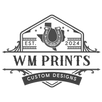3D printing is revolutionizing the way we create and innovate, presenting new opportunities across multiple industries. However, with these opportunities come unique design challenges. Understanding and overcoming these challenges is crucial for successful 3D printing. In this blog post, we explore the common pitfalls and how to address them effectively.
Understanding Material Limitations
One of the primary challenges in 3D printing is the limitation of materials. Each material has specific properties that influence the strength, flexibility, and usability of the finished product. When designing for 3D printing, it's essential to choose the right material that fits the application's requirements. Experimentation and prototyping can help determine which material will provide the best results, but this requires both time and resources.
Addressing Design Complexity
The complexity of designing intricate structures is another common issue. The more complex the design, the greater the risk of errors during printing. It's crucial to simplify designs where possible or use advanced software capable of handling complex geometry. Many designers are turning to specialized tools to aid them in this process. For instance, organizing your tools effectively can be streamlined with products like the Lyman Type Prep Tools Holder, which keeps tools accessible and maintains an orderly workspace.
Layer Adhesion Challenges
In 3D printing, parts are built layer by layer, and ensuring these layers adhere correctly is vital. Poor adhesion can lead to weak points in the final product. To tackle this, choosing the right printing conditions—such as temperature and speed—is crucial. Calibration of machines and testing with sample prints can also help optimize the printing process and improve layer adhesion.
Scaling and Sizing Issues
Designing a model that prints well at different scales presents its challenges. To ensure the model remains functional and visually appealing at various sizes, it's essential to consider the scalability of components during the design process. Using flexible design tools that allow for easy adjustments can help mitigate these issues.
Conclusion
Overcoming design challenges in 3D printing involves understanding material limitations, simplifying complex designs, ensuring proper layer adhesion, and effectively managing scaling and sizing issues. By leveraging tools and accessories like the Lyman Type Prep Tools Holder, designers can streamline their workflow and improve the quality of their printed models.
For more innovative 3D printing solutions and products, visit WM Prints.





